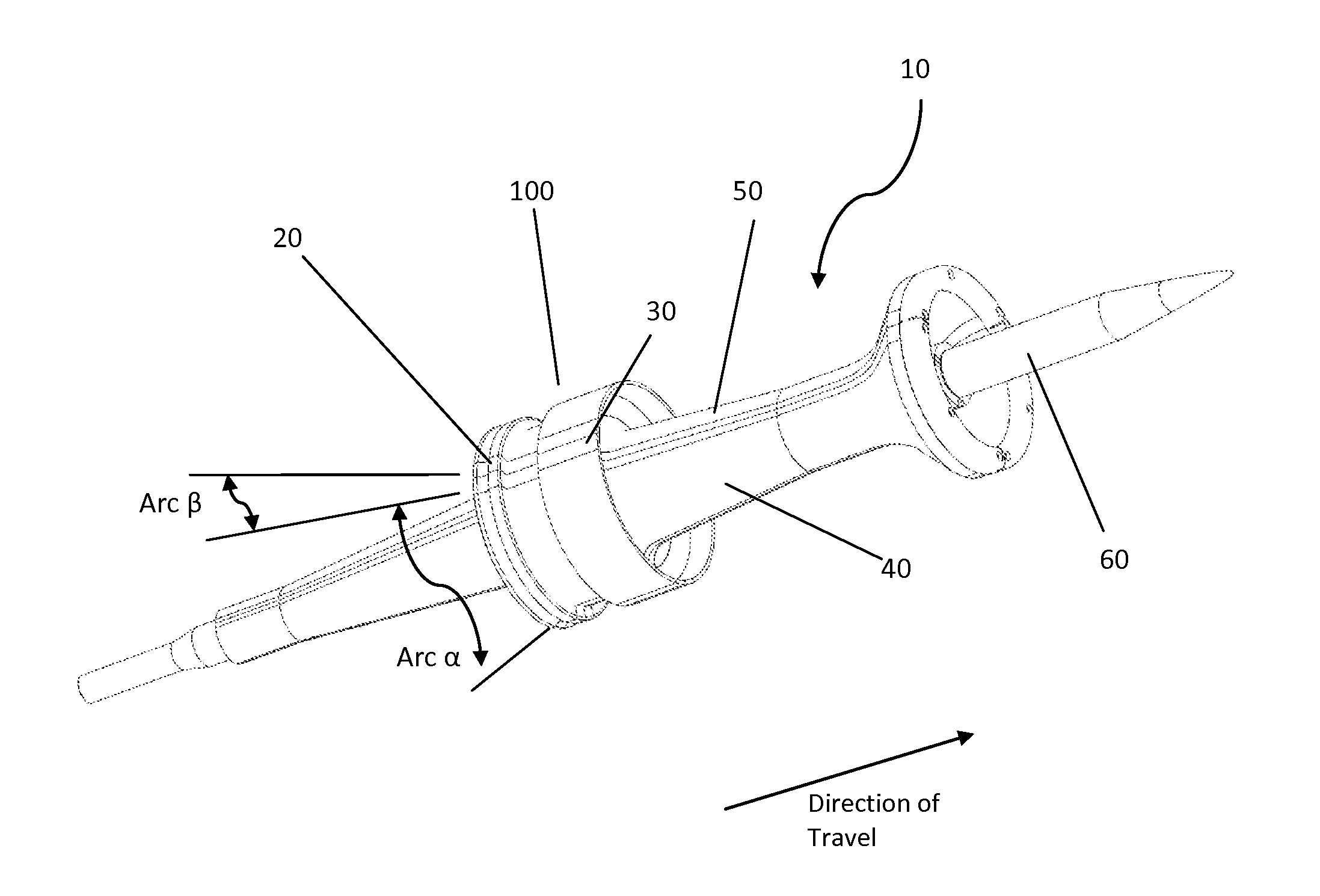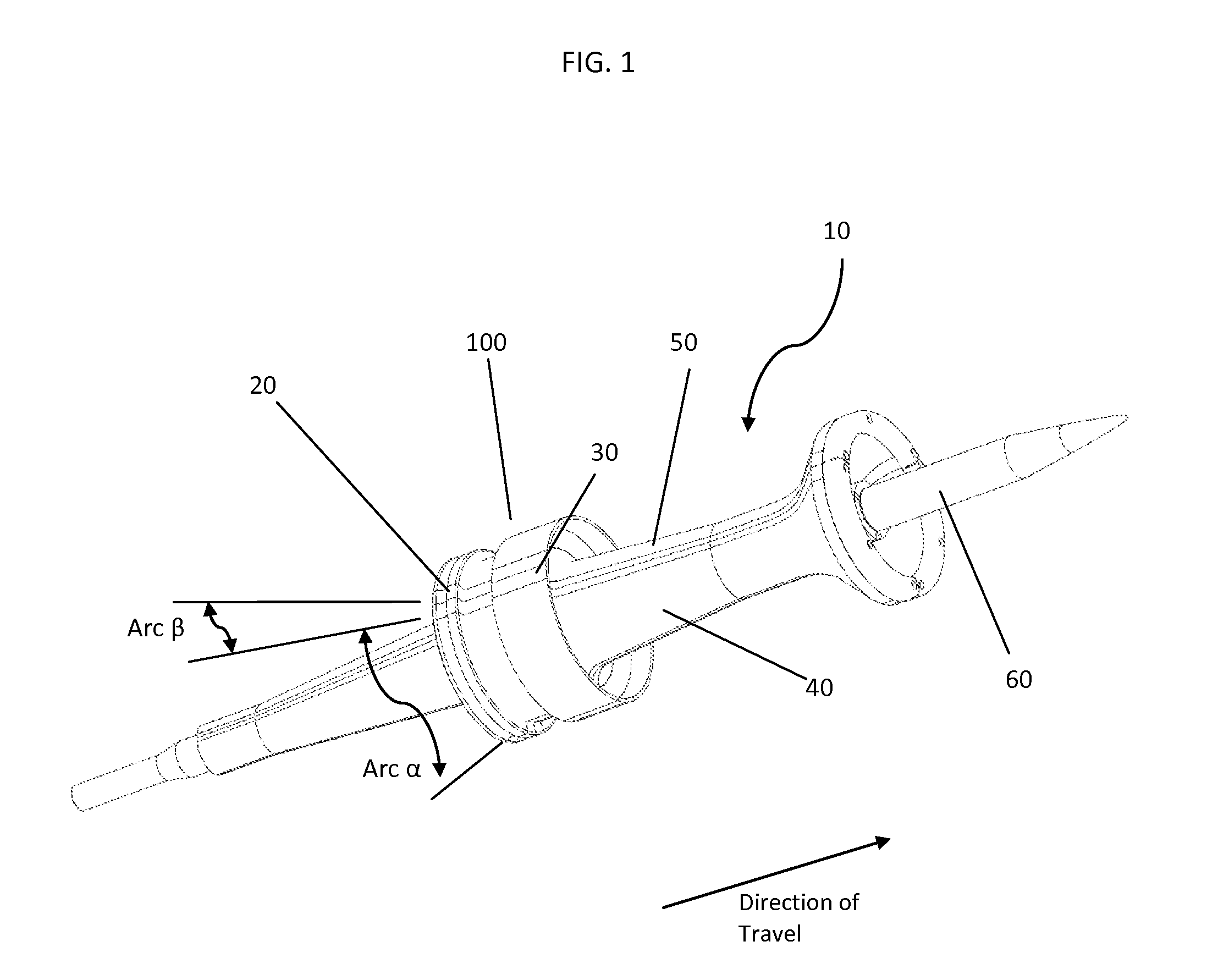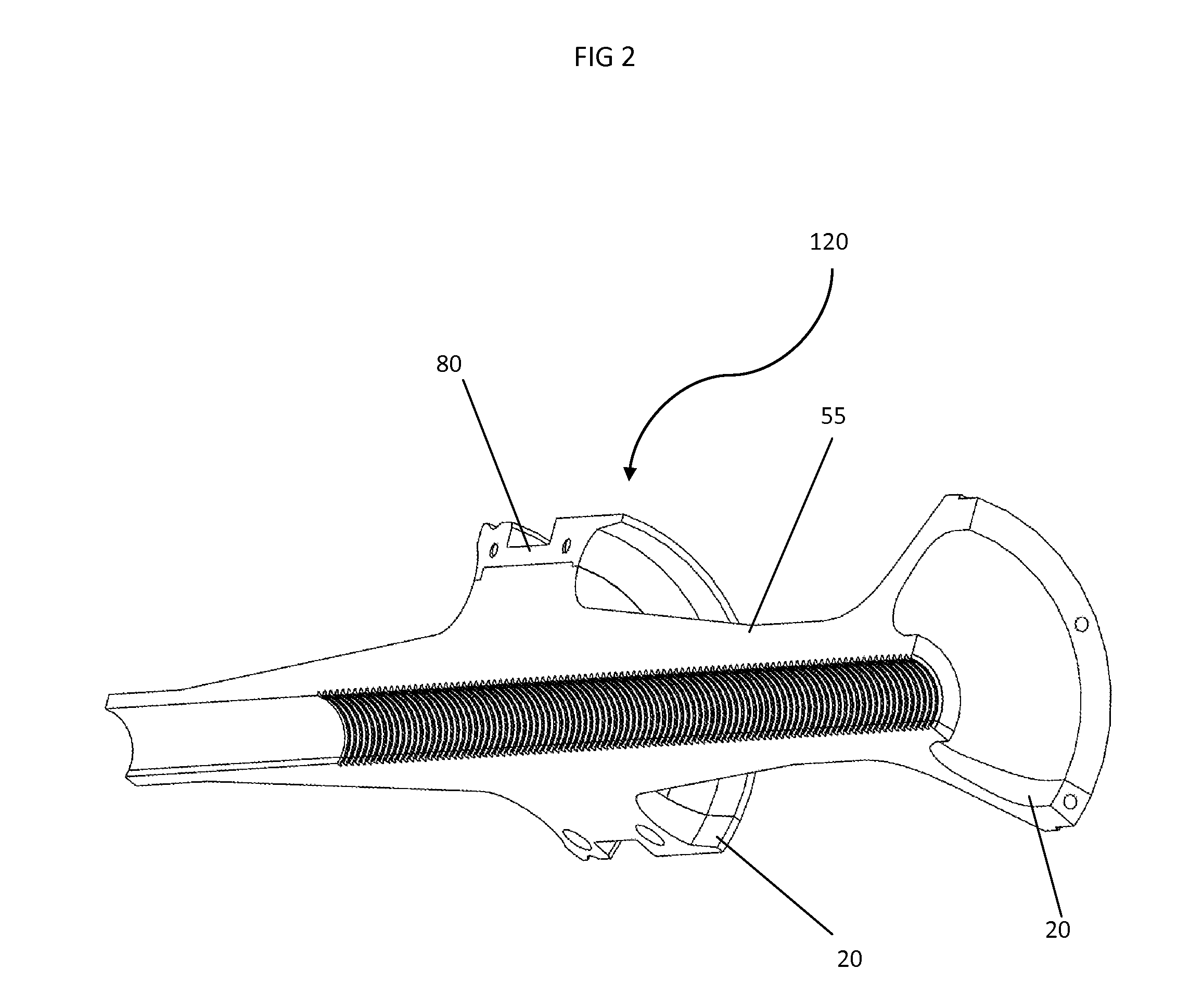Composite sabot
a composite material and sabot technology, applied in the field of military sabots, can solve the problems of low torsional load capability, failure of composite materials in rifled gun systems, and heavy weight when compared to modern composite materials, and achieve the effect of maximizing the ratio of composite to aluminum and minimizing weigh
- Summary
- Abstract
- Description
- Claims
- Application Information
AI Technical Summary
Benefits of technology
Problems solved by technology
Method used
Image
Examples
Embodiment Construction
[0017]The present invention comprises a lightweight metal insert reinforced composite sabot projectile for use with large caliber, such as 105 mm or 120 mm rifled gun systems, as well as, medium and small caliber rifled gun systems. Referring to FIG. 1, a sabot of the present invention, 10, wherein, aluminum wedges or plates 20, 30, are inserted longitudinally along the longitudinal axis of the sabot, one aluminum wedge being bonded to each side of each lightweight composite material sabot segment 40, 50 (i.e. sandwiching the composite material segment); each wedge 20, 30, having an identical outline as the composite material sabot segment 40, 50, to which each is affixed; thereby, providing a reinforced composite sabot having the torsional strength required to survive being launched from a rifled gun tube without any loss of its body integrity. The subject sandwiched composite material sabot segments are aligned and held together by mechanical means to form the completed sabot, whi...
PUM
| Property | Measurement | Unit |
|---|---|---|
| circumference | aaaaa | aaaaa |
| torsion forces | aaaaa | aaaaa |
| physical forces | aaaaa | aaaaa |
Abstract
Description
Claims
Application Information
 Login to View More
Login to View More - R&D
- Intellectual Property
- Life Sciences
- Materials
- Tech Scout
- Unparalleled Data Quality
- Higher Quality Content
- 60% Fewer Hallucinations
Browse by: Latest US Patents, China's latest patents, Technical Efficacy Thesaurus, Application Domain, Technology Topic, Popular Technical Reports.
© 2025 PatSnap. All rights reserved.Legal|Privacy policy|Modern Slavery Act Transparency Statement|Sitemap|About US| Contact US: help@patsnap.com



